A national consultative workshop on maternal, neonatal and child health was held from 28 to 30 November 2013 at PC Bhurban, Murree. The workshop was inaugurated by Ms Saira Afzal Tarar, Federal Minister Health, and jointly organized by the Ministry of National Health Services, Regulation and Coordination and the World Health Organization (WHO). Its prime objective was to develop a national plan of action for 2013–2015 to accelerate progress towards Millennium Development Goals (MDGs) 4 and 5 in Pakistan.
Health status indicators
The health status indicators of Pakistan are poorer than most low-income countries, even when compared to countries with a lower gross national product per capita. While the health of the population in Pakistan has improved over the past decades, the rate and level of improvement has been unsatisfactory. Contributing factors include poverty, low levels of literacy and lack of civic facilities such as proper sanitation and water.
More importantly, however, there are weaknesses in the health care delivery system including insufficient focus on preventive interventions, gender imbalances, weak human resource development and insufficient funds. Unfortunately, a visible decrease in maternal newborn mortality rate (deaths under one month of age) over the past few years has not been achieved.
The newborn mortality rate now constitutes more than half of all infant deaths. Infant mortality and the maternal mortality ratio and newborn mortality rates are higher than those in India, Bangladesh and Sri Lanka. In Pakistan, infants and newborn babies die mainly due to birth asphyxia, intra-uterine growth retardation, acute respiratory infections and diarrhoea. All of these causes are both preventable and treatable. A majority of births occur at home and are attended by untrained traditional birth attendants. The major causes of maternal deaths are haemorrhage, puerperal sepsis, toxaemia of pregnancy and obstructed labour. Service provision has been adversely affected by lack of qualified personnel especially female health staff and high levels of absenteeism.
Human development indicators
Pakistan is ranking 145 out of 187 countries on the UNDP human development index. The country ranks amongst the highest total fertility rates in the Eastern Mediterranean Region. It is also among the 10 countries in the Region with highest child and maternal mortality rates. Despite the efforts of the authorities and the civil society, Pakistan is falling behind the MDGs which the international community fixed for 2015.
Improving maternal and child health
A national maternal and child health programme has been initiated to improve maternal and neonatal child health services for citizens in particular the poor and marginalized. It aims to improve access to high quality maternal and child health care and family planning services through basic EmONC in 550 health facilities and comprehensive EmONC in 275 hospitals. Besides, 12 000 community midwives would provide services within community.
If Pakistan pursues high-level commitment and concerted efforts to accelerate the implementation of cost-effective evidence-based packages of interventions in full collaboration with partners allocating the required human and financial resources, the country will be able to accelerate progress towards the MDGs and more mothers and children will be saved.
A national consultative workshop on maternal, neonatal and child health was held from 28 to 30 November 2013 at PC Bhurban, Murree. The workshop was inaugurated by Ms Saira Afzal Tarar, Federal Minister Health, and jointly organized by the Ministry of National Health Services, Regulation and Coordination and the World Health Organization (WHO). Its prime objective was to develop a national plan of action for 2013–2015 to accelerate progress towards Millennium Development Goals (MDGs) 4 and 5 in Pakistan.
Health status indicators
The health status indicators of Pakistan are poorer than most low-income countries, even when compared to countries with a lower gross national product per capita. While the health of the population in Pakistan has improved over the past decades, the rate and level of improvement has been unsatisfactory. Contributing factors include poverty, low levels of literacy and lack of civic facilities such as proper sanitation and water.
More importantly, however, there are weaknesses in the health care delivery system including insufficient focus on preventive interventions, gender imbalances, weak human resource development and insufficient funds. Unfortunately, a visible decrease in maternal newborn mortality rate (deaths under one month of age) over the past few years has not been achieved.
The newborn mortality rate now constitutes more than half of all infant deaths. Infant mortality and the maternal mortality ratio and newborn mortality rates are higher than those in India, Bangladesh and Sri Lanka. In Pakistan, infants and newborn babies die mainly due to birth asphyxia, intra-uterine growth retardation, acute respiratory infections and diarrhoea. All of these causes are both preventable and treatable. A majority of births occur at home and are attended by untrained traditional birth attendants. The major causes of maternal deaths are haemorrhage, puerperal sepsis, toxaemia of pregnancy and obstructed labour. Service provision has been adversely affected by lack of qualified personnel especially female health staff and high levels of absenteeism.
Human development indicators
Pakistan is ranking 145 out of 187 countries on the UNDP human development index. The country ranks amongst the highest total fertility rates in the Eastern Mediterranean Region. It is also among the 10 countries in the Region with highest child and maternal mortality rates. Despite the efforts of the authorities and the civil society, Pakistan is falling behind the MDGs which the international community fixed for 2015.
Improving maternal and child health
A national maternal and child health programme has been initiated to improve maternal and neonatal child health services for citizens in particular the poor and marginalized. It aims to improve access to high quality maternal and child health care and family planning services through basic EmONC in 550 health facilities and comprehensive EmONC in 275 hospitals. Besides, 12 000 community midwives would provide services within community.
If Pakistan pursues high-level commitment and concerted efforts to accelerate the implementation of cost-effective evidence-based packages of interventions in full collaboration with partners allocating the required human and financial resources, the country will be able to accelerate progress towards the MDGs and more mothers and children will be saved.








